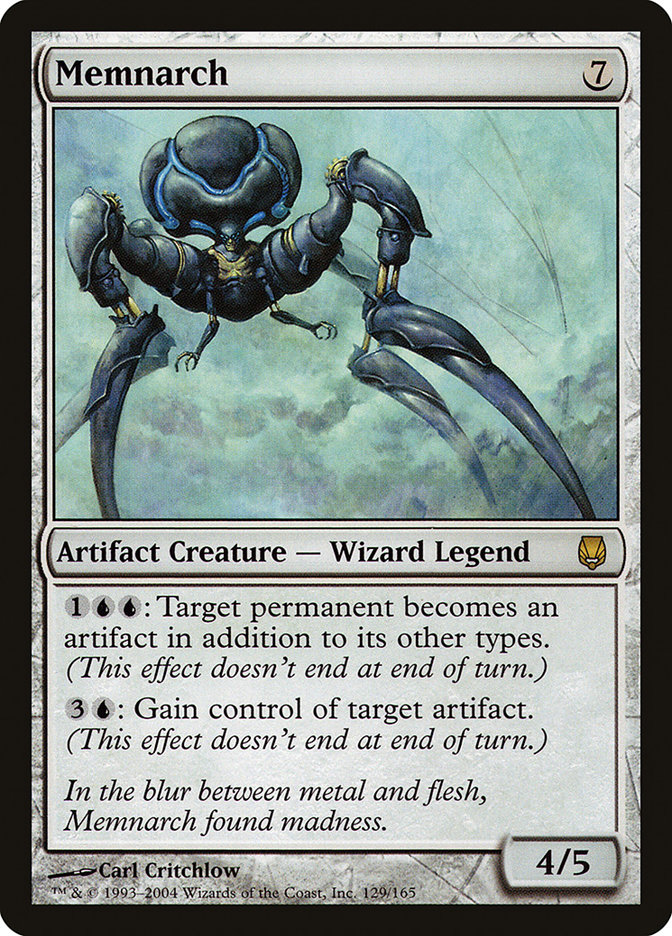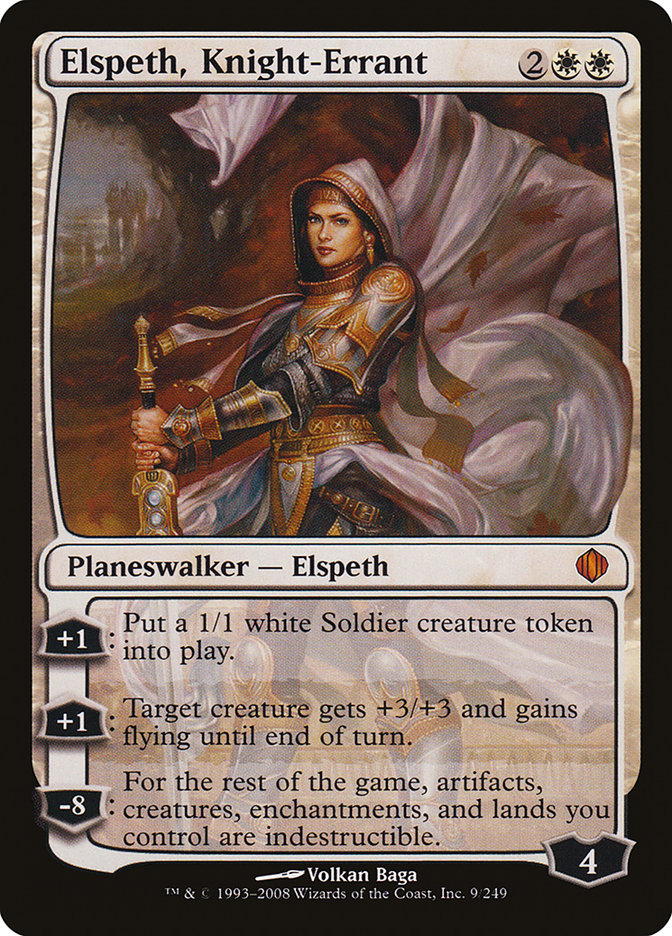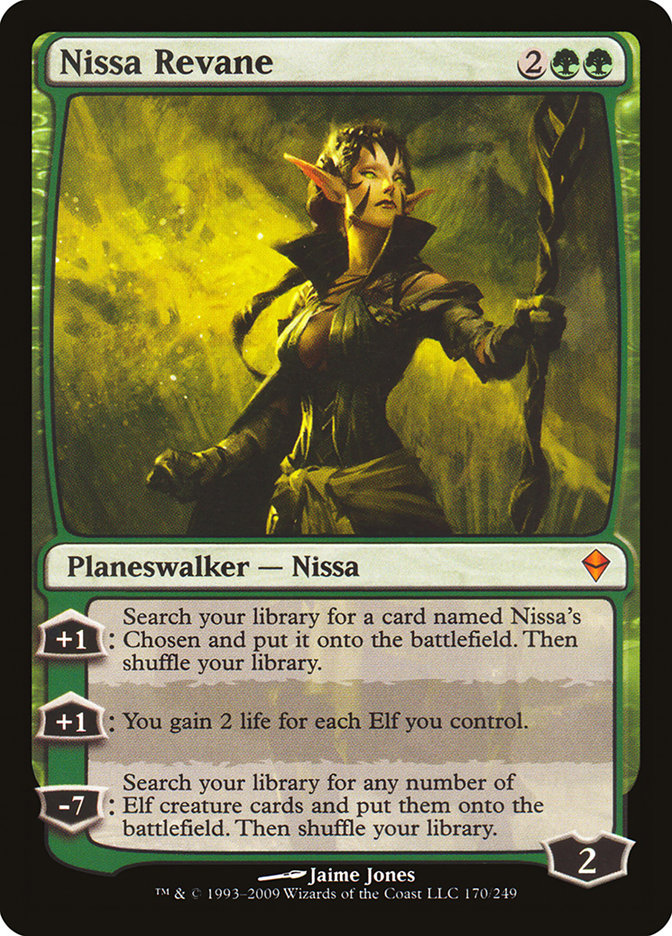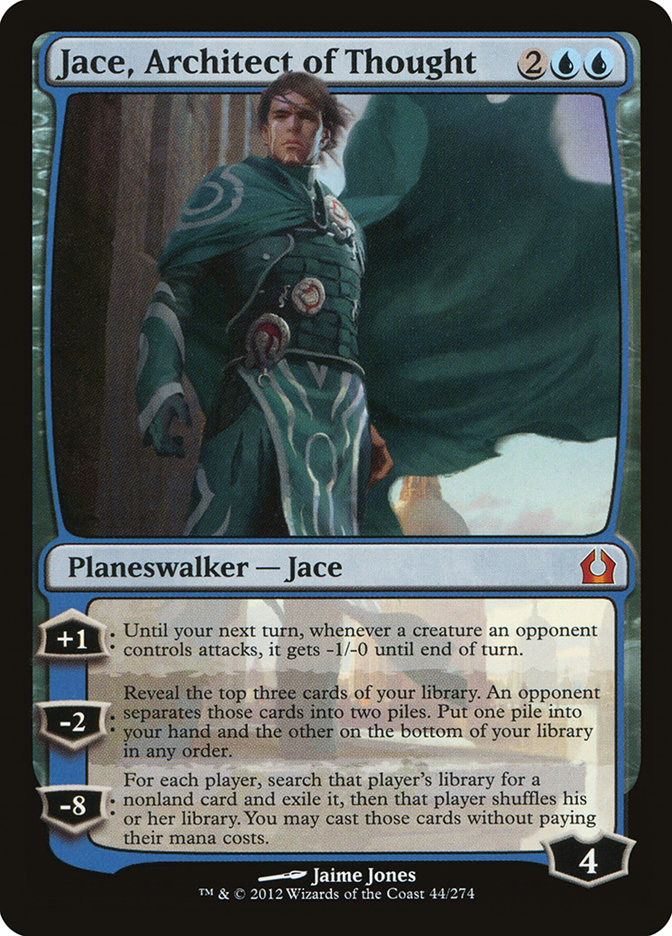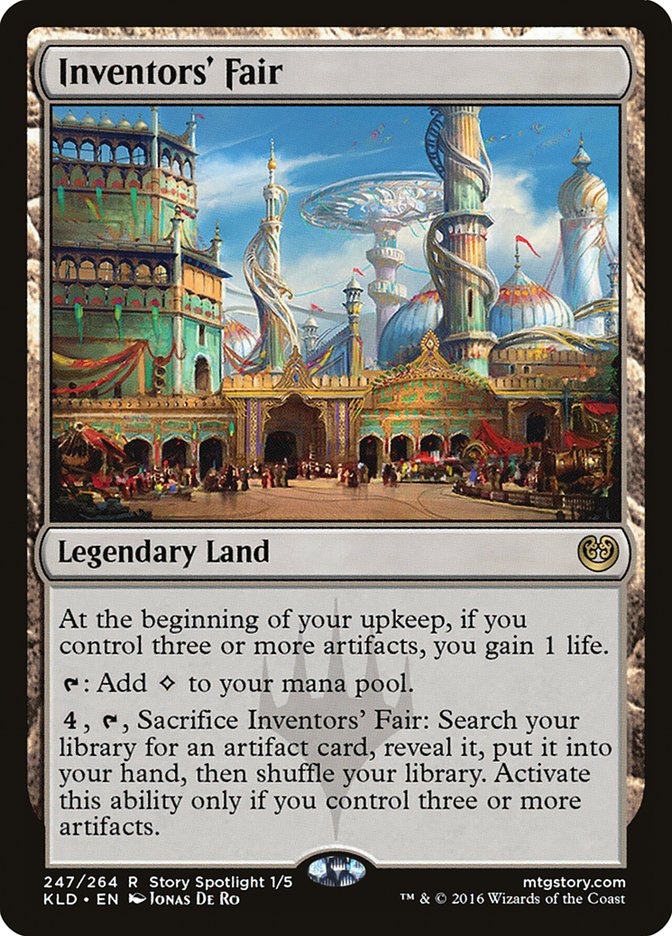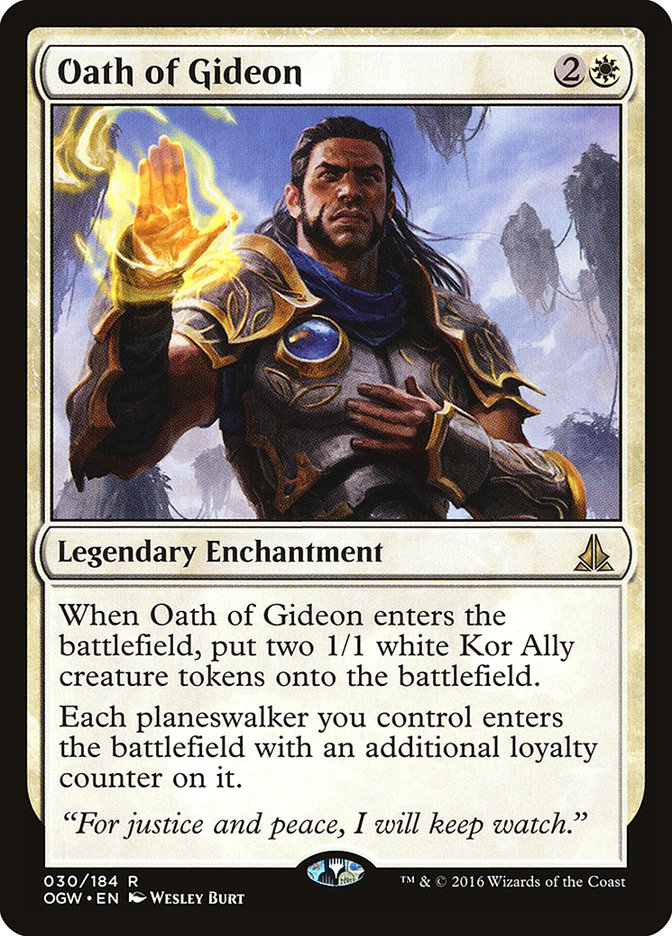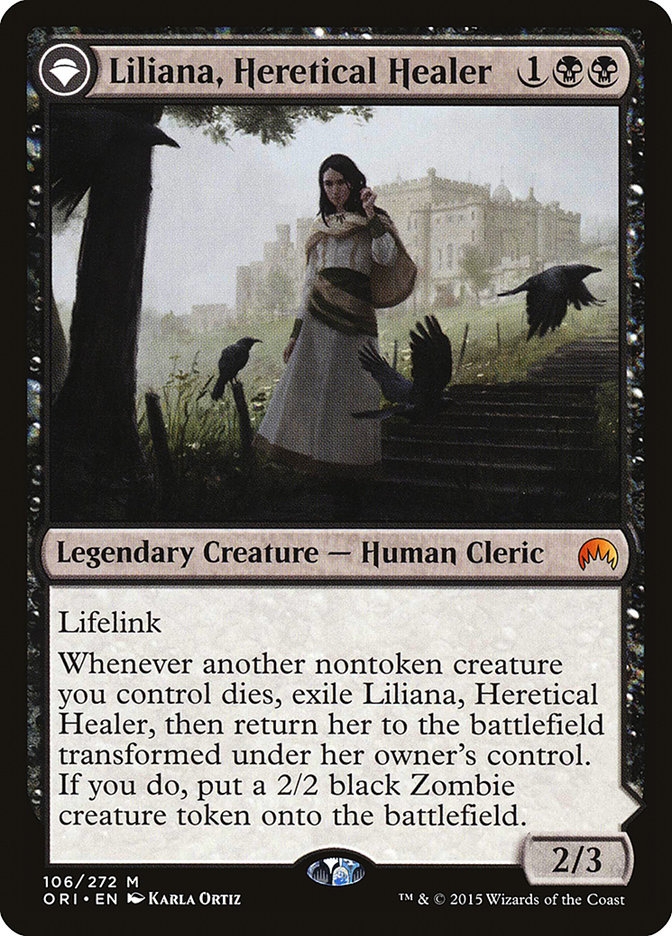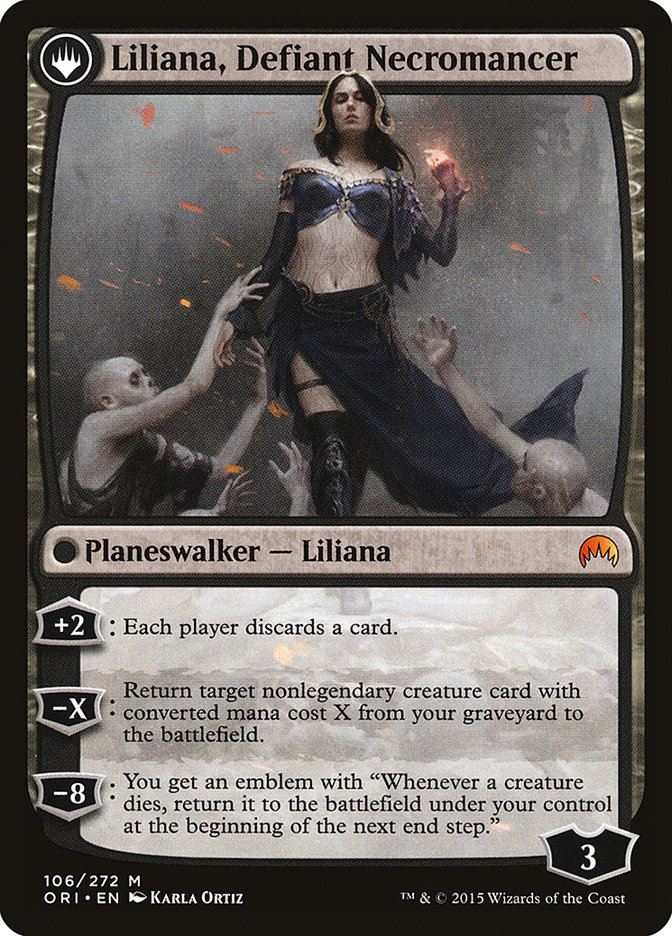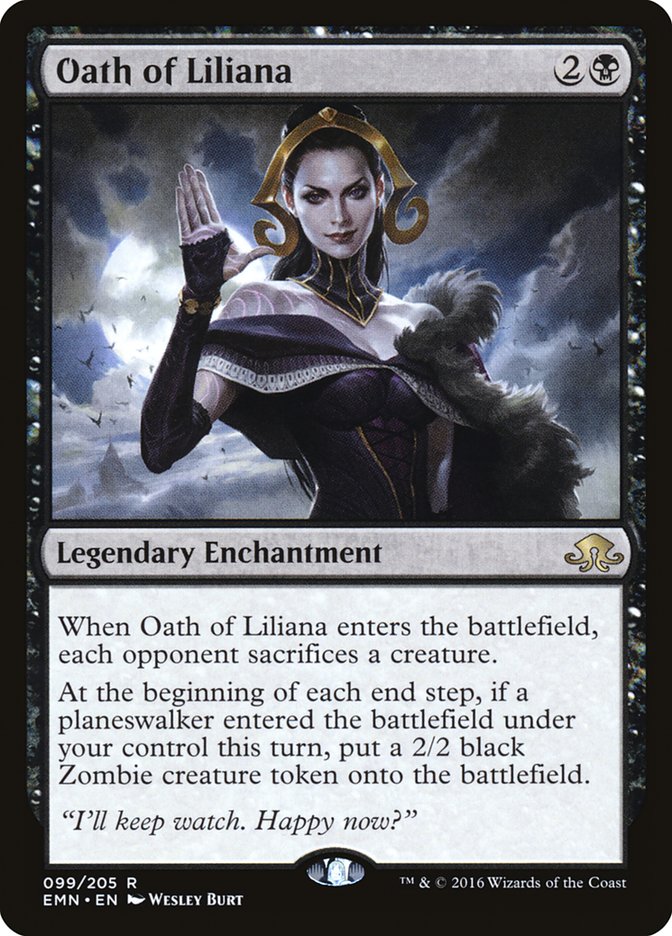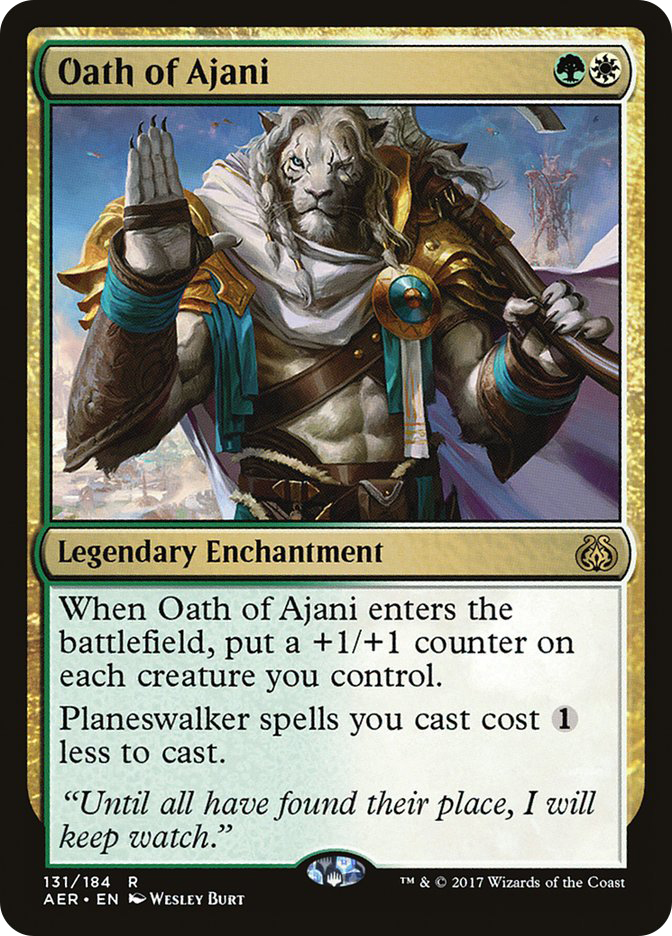With the conclusion of Kaladesh block, Magic: The Gathering has gone through three half-year blocks in its new storytelling phase, the “Gatewatch Era.”
As Mark Rosewater is fond of saying, Magic design moves like a pendulum, sweeping in different directions but never going too far from the game’s center. Magic’s storytelling has in the past moved similarly. Before looking too closely at the Gatewatch Era, it’s helpful to review what came before.
A Brief History of Magic Storytelling
The earliest incarnation of the game had little overarching storyline beyond “You are a planeswalker and you’re battling for control over a plane of existence.” After some ramp-up, a complex multiyear storyline called The Weatherlight Saga (so named for the Skyship Weatherlight, which hauled key nonplaneswalker characters like Gerrard Capashen and Orim, Samite Healer around) followed, culminating in Invasion block. This storytelling era was notable for showing story moments great and small on cards, like Jilt, which makes next-to-no sense unless you know all that came before.
The pendulum soon swung back, with Odyssey and Onslaught blocks sitting on a remote corner of Dominaria little touched by the eponymous Apocalypse that brought The Weatherlight Saga to an end. Three subsequent blocks, named for the planes on which they were set, were either mostly (Mirrodin) or near-perfectly (Kamigawa, Ravnica) self-contained.
The pendulum remained in motion. Time Spiral block trafficked in nostalgia and “put a bow” on the old era of storytelling, depowering planeswalkers in “The Mending” (of time rifts). While Lorwyn/Shadowmoor blocks, Alara block, and Zendikar block showcased new settings, the introduction of new, lower-powered planeswalker characters like Jace Beleren and Tezzeret the Seeker suggested a new storytelling focus in its preparatory stages.
One might call the time immediately preceding the creation of the Gatewatch the “Revisitation Era.” When Wizards of the Coast wasn’t revisiting settings (Scar of Mirrodin block, Return to Ravnica block), it was showing past planeswalkers in new contexts (Sorin Markov in Innistrad block, Ajani Goldmane in Theros block, Sarkhan Vol in Tarkir block).
Or both.
The line between the Revisitation Era and the Gatewatch Era may best be drawn between Dragons of Tarkir and Magic Origins for the reasons explained below.
Defining Changes of the Gatewatch Era
The end of Core Sets and the shift to two-set blocks. Magic Origins, “the last Core Set,” was repurposed as an introduction to the first five characters who would join the future Gatewatch. While two-set blocks had been done before with Lorwyn-Morningtide and Shadowmoor-Eventide, the Gatewatch Era makes two-set blocks the norm, as opposed to the three of Tarkir block and before.
The return of sequential plots within sets. Though Gatewatch Era sets not nearly as riddled with “story cards” as, say, Tempest, starting with Magic Origins, the Creative side has placed more plot-specific moments on cards. Originally called “Pivotal Moments,” these have been formalized and officially recognized as “Story Spotlight” cards since Kaladesh.
Art books in, novels out. I first saw this pointed out by Mike Linnemann. He noted that, for well over a decade, Wizards of the Coast published worldbuilding details online for free (the Planeswalker’s Guide to Theros, for example) while charging for printed novels and later e-books (Theros: Godsend Part I, for example), with only a few exceptions like A Planeswalker’s Guide to Alara, a small-size full-color “field guide” to the plane that was printed in the same year as Magic novel Alara Unbroken. Nowadays, Magic’s story is free, while the intricate worldbuilding details are sold in beautiful coffee-table-size books with titles like The Art of Kaladesh.
The film series looms over all. On 17 January 2014, Twentieth Century Fox and Hasbro announced plans for a Magic: The Gathering film franchise. Eighteen months later, Magic Origins debuted, and all subsequent Standard-legal sets have revolved around the Gatewatch and their wacky hijinks. Oh, yes, and the block structure got rearranged so that Magic could change settings and stories every six months, essentially going double-time on its storytelling just when the Gatewatch got going. I’m not saying it can’t be coincidence, but the timing sure doesn’t strike me as coincidental.
A core cast appearing set after set after set. As of the end of Aether Revolt, Gideon Jura, Jace Beleren, Chandra Nalaar, and Nissa Revane have figured in all seven Standard-legal sets since Magic Origins. Liliana Vess wasn’t part of the original Gatewatch formed in Battle for Zendikar block, but she’s figured in every set since Shadows over Innistrad as well as Magic Origins. A seven-set consecutive run is unprecedented in the Modern-legal era of Magic.
The Four Arcs of the Gatewatch, So Far
Magic Origins: The Origin Stories. Mark Rosewater has publicly noted that the Gatewatch is Magic’s answer to the Avengers and the Justice League from superhero comics and their associated film franchises. The evolution of justice-punk Kytheon Iora into knightly Gideon Jura, Liliana Vess’s turn from troubled healer to necromancer femme fatale, and the other three origin stories (complete with retcon in the case of Nissa!) were all packed into one handy-dandy set.
Battle for Zendikar: They Get Together. Once again, using the Avengers as a template, we have a team of preexisting superheroes/planeswalkers who unite for their own reasons and have a “Hey, let’s do this more often” moment. The set Oath of the Gatewatch in particular was sold as this “moment,” and it’s hard not to think of the cover of Avengers #1 once you’ve seen it.
Shadows over Innistrad: Things Get Rockier. In Avengers #2, an alien hostile force, the “Space Phantom,” tries to destroy the Avengers via hostile takeover of their bodies. Any resemblance to the conclusion of Eldritch Moon, aka “The Promised End,” is absolutely, positively, entirely, 100% coincidental. In any case, the team survives, even if it’s not the same after; in Magic’s case, it actually adds a team member (Liliana) rather than losing one (The Hulk).
Kaladesh: They Get Famous. It’s not quite a team-up with the X-Men and the Fantastic Four, but the Gatewatch get a visitor, one Dovin Baan of Kaladesh, who wants to hire them to run security for the fair. The Gatewatch big-time him (they only handle interplanar threats, thank you very much), but Chandra Nalaar gets Bad Memories 101 and heads back to her plane of birth. The rest of the Gatewatch follows, whereupon they find an old nemesis (Tezzeret the Schemer) who’s in thrall to an even older nemesis (Nicol Bolas, Planeswalker). This discovery propels them to their next adventure, Amonkhet, even though new team member Ajani Goldmane thinks that’s a bad idea.
Looking Forward to Amonkhet Block
If this were the Avengers or the Justice League comics, Amonkhet block would be Gatewatch #4. So what does this “fourth issue” have in store? I’ve watched The Professor give his take over on Tolarian Community College, and I’m of two minds about his prediction that the Gatewatch will “lose” in Amonkhet block.
Will the Gatewatch lose…the battle against Bolas? So far the results of the three Gatewatch blocks have been “Roast Eldrazi,” “We more-or-less got what we wanted,” and “Liberators-R-Us.” While Magic’s story is capable of swerving on us the receivers (case in point: the total mind-wrecking that was “The Promised End”), at this point, the Gatewatch continuing their winning ways would constitute a swerve. A team that wins all the time without setbacks is just an invincible juggernaut and boring. Everything’s being set up for them to lose. But how much will they lose?
Will the Gatewatch lose…one or more members? Here’s where I respectfully disagree with The Professor. I think at least one member of The Gatewatch is leaving the team. I don’t necessarily think someone’s dying, but someone’s leaving.
The larger a team gets, the less stable it is. With Ajani Goldmane making his oath, there are now six official members of the Gatewatch. That’s a lot of personalities to juggle, and while Mister Cat isn’t going with the rest of the crew to the plane of Amonkhet, at least not at the start, there are still five distinct personalities and worldviews, and they’re called “enemy color” pairs for a reason. Someone, most likely the inherently selfish Liliana but possibly someone like Chandra or Jace, could just flip the metaphorical table and leave.
Nicol Bolas arranged Liliana’s deals with the Demons. Liliana is biologically older than the rest of the Gatewatch put together, despite her looks. She remembers what it was like to be a pre-Time Spiral planeswalker, and while she doesn’t have that level of power anymore, four deals with four Demons gave her lasting youth…at a price. Since then, she’s bumped off two of her Demonic contract-holders, Kothophed and Griselbrand.
But who put Liliana in touch with those four Demons? Nicol Bolas. And it’s hard to imagine, knowing Nicol Bolas and his reputation, that he didn’t bake anything into those deals for himself. I don’t know if Bolas will try to bribe Liliana with freedom from her other deals, just take her over using one clause or another in a magical contract, or something else entirely, but I don’t think Liliana is long for the Gatewatch, and the titular Hour of Devastation is the Gatewatch’s devastation as it’s pulled apart.
Temporarily, of course, because movie deal. But that’s my called shot.
That’s what I’ve seen out of the Gatewatch Era so far, and I’ve made my prediction for its next story arc. What’s yours?



